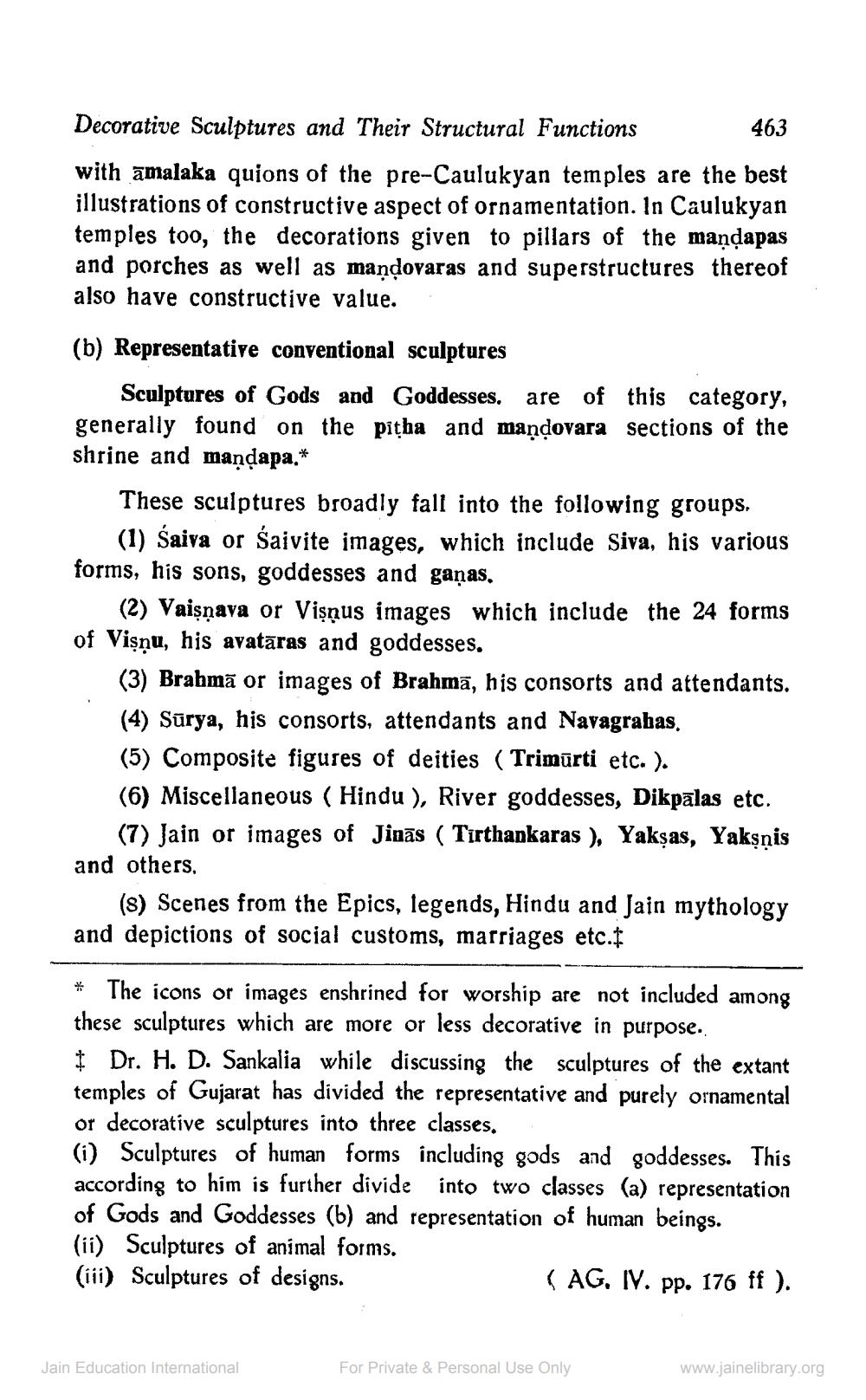________________
Decorative Sculptures and Their Structural Functions 463 with amalaka quions of the pre-Caulukyan temples are the best illustrations of constructive aspect of ornamentation. In Caulukyan temples too, the decorations given to pillars of the maņdapas and porches as well as mandovaras and superstructures thereof also have constructive value.
(b) Representative conventional sculptures
Sculptures of Gods and Goddesses, are of this category, generally found on the pitha and maņdovara sections of the shrine and mandapa.*
These sculptures broadly fall into the following groups.
(1) Saiva or śaivite images, which include Siva, his various forms, his sons, goddesses and gaņas.
(2) Vaişņava or Vişņus images which include the 24 forms of Vişņu, his avatāras and goddesses.
(3) Brabmā or images of Brahmā, his consorts and attendants. (4) Sürya, his consorts, attendants and Navagrahas. (5) Composite figures of deities ( Trimūrti etc. ). (6) Miscellaneous ( Hindu ), River goddesses, Dikpālas etc.
(7) Jain or images of Jinās ( Tirthankaras ), Yakşas, Yaksnis and others.
(8) Scenes from the Epics, legends, Hindu and Jain mythology and depictions of social customs, marriages etc. I
* The icons or images enshrined for worship are not included among these sculptures which are more or less decorative in purpose. | Dr. H. D. Sankalia while discussing the sculptures of the extant temples of Gujarat has divided the representative and purely ornamental or decorative sculptures into three classes. (i) Sculptures of human forms including gods and goddesses. This according to him is further divide into two classes (a) representation of Gods and Goddesses (b) and representation of human beings. (ii) Sculptures of animal forms. (iii) Sculptures of designs.
(AG. IV. pp. 176 ff ).
Jain Education International
For Private & Personal Use Only
www.jainelibrary.org




